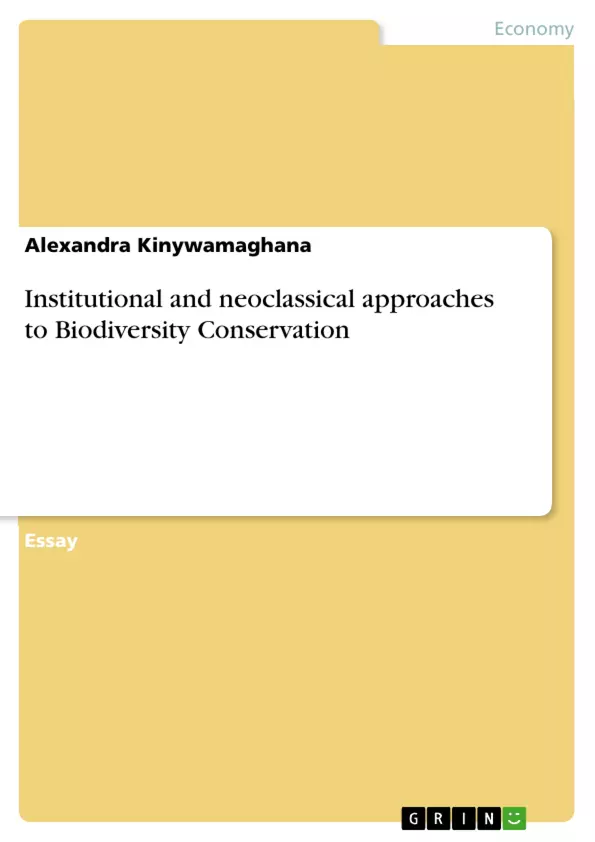The aim of the essay is to set forth the role of institutions in environmental management, particularly by drawing a comparison to both the neoclassical and institutional approaches as applied specifically to biodiversity management. Ultimately, the essay will seek to elaborate on how the two approaches complement each other.
Water is a necessity to life as institutions are to social, environment, and economic order; institutions shape values of a society. Values, norms, beliefs, and conventions are derived from world views and perceptions of a society. Examining nature’s importance for human well-being is not a simple task; there is no single solution to challenges facing humankind. Nonetheless, institutions create a conducive environment to achieve solutions. Neoclassical economists suggest that to solve environmental degradation, we need to subject nature to the same treatment like any other good, tradable on the market. On the contrary, institutional economists argue that to solve the problem of environmental degradation, we need to understand the power play in society; power that shape behaviour, values, and perception. Institutions are necessary for handling social-environmental issues such as biodiversity loss.
Inhaltsverzeichnis (Table of Contents)
- Introduction
- Institutional Paradigm
- Institutional perspective of the environment
Zielsetzung und Themenschwerpunkte (Objectives and Key Themes)
This essay aims to explore the role of institutions in environmental management, specifically focusing on biodiversity conservation. It compares the neoclassical and institutional approaches to biodiversity management, highlighting their complementary nature. The essay focuses on formal rules, such as environmental policies, laws, and conventions, as institutions.
- The importance of institutions in shaping values and behaviors related to environmental protection.
- The contrasting perspectives of neoclassical and institutional economics on environmental management.
- The role of institutions in mitigating biodiversity loss through policies and conservation practices.
- The potential for combining neoclassical and institutional approaches to create a comprehensive framework for biodiversity conservation.
Zusammenfassung der Kapitel (Chapter Summaries)
The introduction sets the stage by discussing the growing recognition of environmental issues as market problems. It contrasts the neoclassical view of human behavior, which emphasizes rationality and self-interest, with the institutional perspective, which acknowledges the influence of institutions on individual choices and actions.
The section on the institutional paradigm delves into the history of institutional economics, highlighting its revival in the 1960s as a reaction to the dominance of the neoclassical school. It contrasts the classical institutional approach with New Institutional Economics (NIE), which incorporates neoclassical foundations but emphasizes the role of markets and property rights in environmental management. The section also explores different interpretations of institutions and their role in structuring social interactions.
Schlüsselwörter (Keywords)
This essay focuses on the intersection of environmental management, biodiversity conservation, institutions, neoclassical economics, and institutional economics. Key themes include the influence of institutions on individual behavior, the role of markets and property rights in environmental protection, and the importance of understanding power dynamics in addressing environmental challenges. The essay also explores the potential for combining different economic perspectives to create effective policy frameworks for biodiversity conservation.
- Quote paper
- Alexandra Kinywamaghana (Author), 2015, Institutional and neoclassical approaches to Biodiversity Conservation, Munich, GRIN Verlag, https://www.grin.com/document/342566



